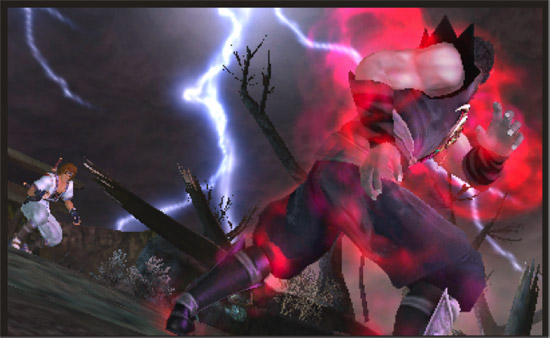Today, DMP announced in Japan that Nintendo has adopted DMPOpenGL ES 1.1 compliant PICA200 for the 3DS.
The new Nintendo 3DS is an amazing little device. The DS has already been a beloved machine attracting over 100 million users since 2004. Not many products (that I can think of, at least) can match that volume of enthusiasm or the customer base. And it’s self perpetuating because the installed base attracts developers which create new games which attracts new consumers – it is a perfect ecosystem.
Nintendo has experimented with S3D for years, starting with the Nintendo Virtual Boy monochrome system, and the company has tried out shutter glasses but lacked the computer horsepower and content to make it compelling. Nintendo has always been willing to try out new technologies, but the company seems aware of the dynamics that Kathleen Maher tries to spell out in her ongoing work on the Practicality Gap. To sum it up in a phrase, Nintendo seems keenly aware that certain pieces of the puzzle must be in place before other pieces will fit.
The company has been investigating various semiconductor and IP suppliers since 2006 having looked at their partner ATI (Wii), ARM (DS), Imagination Technologies, Nvidia, and others. The decision to use DMP’s PICA200 design was made over a year ago and testing and development have been going on for some time; it’s not as easy as it may seem to license a core and integrate it into an SoC and get the costs (die size), power consumption (has to run forever on small batteries), and performance (clocks and memory management) balance. So as you learn more about this device if you wonder why it took them so long, keep all that in mind.
Founded in 2002, DMP, a graphics IP core supplier in Japan, has adopted a business strategy of focusing on the digital consumer market.
DMP first told me about the PICA architecture in early 2005 which was their first IP core based on Ultray architecture. The president and CEO of DMP, Tatsuo Yamamoto, told me then the Ultray allows real-time photo realistic rendering with physically correct lighting and shadowing such as soft shadow casting and position dependent environmental mapping.
Ultray is unique in that it uses hardware parametric engines for certain graphics features rather than shaders. With this approach, clouds, smoke, gas and other fuzzy objects can be shaded and rendered at an interactive rate.

Scene from DOA on the 3DS; there are quite a few
effects
coming into play in this image. (Source: Nintendo)
At Siggraph 2005 (LA) DMP revealed in more detail some of their techniques for hair, skin, and gaseous shapes. Yamamoto said then that the Ultray could boast lower power consumption due to hardware pipelines, and smaller number of polygons to achieve high-quality graphics based on pixel-level shading (Phong, BRDF, etc.) vs. vertex-level and polygon subdivision.
So the bottom line is that amazing high-end graphics functions in a low-cost handheld device with stereovision is not only possible, it has arrived. The 3DS graphics has a lot of head room to be further exploited and we’re expecting to be really thrilled to see and play with what Nintendo and its partners have at launch.
You can read more about the PICA architecture here and subscribers can read more in various issues of JPR’s TechWatch. (Volume 5, Number 7, April 11, 2005, p10, Volume 5, Number 15, August 1, 2005, p12, Volume 6, Number 17, August 14, 2006, p19.)